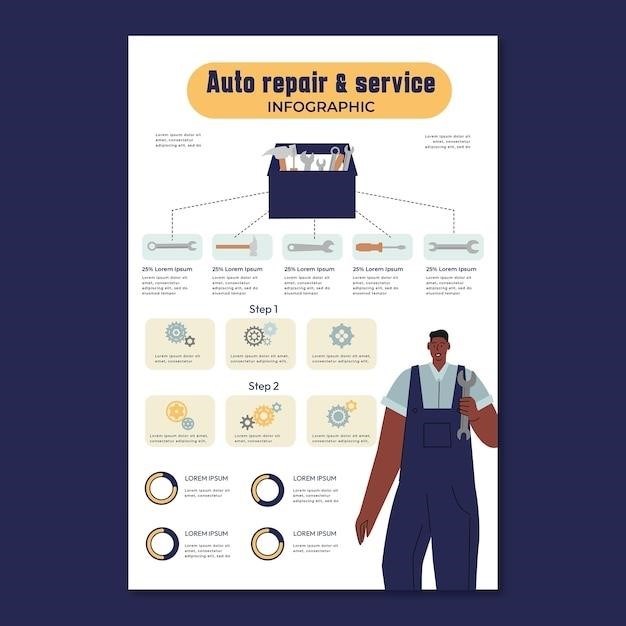The Key of Solomon⁚ A Grimoire Overview
The Key of Solomon, a medieval grimoire, is a book of magic falsely attributed to King Solomon. Various online sources detail its historical context, content, and availability in digital formats like PDFs, often mentioning its association with Solomonic magic and ceremonial practices.
Dating and Origins of the Key of Solomon
Pinpointing the precise origin of the Key of Solomon proves challenging due to the lack of definitive historical records. Scholarly consensus leans towards a 14th or 15th-century Italian Renaissance creation, although many extant manuscripts date from the 16th to 18th centuries. The attribution to King Solomon is purely pseudepigraphical; the actual authorship remains anonymous. The grimoire’s evolution likely involved multiple additions and revisions across centuries, incorporating elements from diverse magical traditions. This complex history makes definitive dating difficult, with variations existing across different manuscripts and editions. The absence of an original manuscript further complicates attempts at precise dating and tracing the grimoire’s evolution. Many online resources discuss this ambiguity, highlighting the challenges in establishing a precise timeframe for its creation.
Authorship and Attribution to King Solomon
The Key of Solomon‘s authorship remains shrouded in mystery. The attribution to King Solomon is entirely fictitious, a common practice in medieval grimoires to lend authority and mystique. No historical evidence links Solomon to the grimoire’s creation. The use of Solomon’s name likely aimed to capitalize on the legendary king’s reputation for wisdom and magical prowess. This pseudepigraphical attribution was a deliberate strategy to enhance the grimoire’s perceived authenticity and appeal to readers seeking powerful magical knowledge. Various online resources note this deliberate misattribution, emphasizing the purely symbolic nature of associating the text with the biblical king. The true authors remain unknown, lost to the passage of time; The grimoire’s anonymous origins contribute to its enigmatic allure and scholarly debate surrounding its historical context.
Key Differences Between the Greater and Lesser Keys
The “Key of Solomon” often refers to two distinct grimoires⁚ the Greater Key of Solomon and the Lesser Key of Solomon (also known as the Lemegeton). While both deal with Solomonic magic, significant differences exist. The Greater Key, a compilation of various 15th-17th century manuscripts, focuses on practical ceremonial magic, detailing rituals, talismans, and invocations. It’s often presented as a more structured and comprehensive guide. Conversely, the Lesser Key, compiled in the mid-17th century, is a more diverse collection of magical texts, encompassing a wider range of practices and entities, including the infamous Goetia. Online resources highlight this distinction, emphasizing the Greater Key’s focus on direct magical workings compared to the Lesser Key’s broader scope and inclusion of diverse magical traditions. Their differing structures and approaches reflect the varied evolution of Solomonic magical practices.
Variations and Editions of the Grimoire
Numerous versions and editions of the Key of Solomon exist, with variations in content and translation. Many are available online as PDFs, reflecting the grimoire’s enduring popularity and accessibility.
The Greater Key of Solomon⁚ Content and Compilation
The Greater Key of Solomon, a renowned grimoire, stands as a significant compilation of Solomonic magic; Its origins trace back to multiple manuscripts spanning the 15th to 17th centuries, showcasing a rich tapestry of magical traditions. Samuel Liddell MacGregor Mathers, a prominent figure in the Hermetic Order of the Golden Dawn, played a crucial role in compiling and translating this influential work towards the end of the 19th century. The Greater Key’s content is diverse, encompassing a wide array of magical practices, rituals, and invocations. It details the creation and use of talismans, seals, and pentacles, offering instructions for summoning spirits and manipulating the forces of nature. The intricate symbolism and complex procedures within the Greater Key have captivated occultists and scholars for centuries. Many versions and interpretations exist, adding to its enduring appeal and the mystery surrounding its true origins. The accessibility of this grimoire through online PDF formats has further fueled interest and research into its practices and historical context. Despite its age, the Greater Key continues to spark fascination within the magical and esoteric communities.
The Lesser Key of Solomon (Lemegeton)⁚ Structure and Sources
The Lesser Key of Solomon, also known as the Lemegeton Clavicula Salomonis or simply the Lemegeton, presents a distinct structure and historical background compared to its “Greater” counterpart. Unlike the Greater Key’s compilation from various sources, the Lemegeton’s origins are less clear-cut, with scholarly consensus pointing to a mid-17th-century compilation of materials from several centuries prior. Its anonymous authorship adds to the mystique surrounding this grimoire. The Lemegeton is structured into distinct sections, each focusing on different aspects of magic and demonology. The most famous part is the Goetia, a compendium of 72 demons, their seals, and methods for summoning and controlling them. Other sections delve into the arts of divination, astrology, and various magical practices. The Lemegeton’s sources are believed to be a mixture of earlier grimoires, magical texts, and possibly even folk traditions. Its influence on later grimoires and magical practices is undeniable, though its complex structure and varied content make it a challenging text for beginners. The accessibility of the Lemegeton in PDF format allows for widespread study and interpretation, yet its origins continue to be a subject of scholarly debate.
Other Solomonic Grimoires⁚ A Comparative Analysis
Beyond the Greater and Lesser Keys, a multitude of texts claim a Solomonic lineage, each offering unique perspectives on magic and demonology. These grimoires, often available as PDFs online, vary significantly in content, structure, and purported origins. Some focus on specific magical operations, like talisman creation or divination, while others present more encyclopedic approaches to the occult arts. A comparative analysis reveals fascinating differences in the attributed magical systems, the hierarchies of spirits invoked, and the rituals described. Some emphasize angelic invocation, while others concentrate on demonic conjuration. The language and style also vary significantly, reflecting their diverse origins and compilation periods. Studying these grimoires in parallel reveals evolving interpretations of Solomonic magic across centuries and geographical regions. The accessibility of these texts in digital formats, such as PDFs, allows for a deeper understanding of the multifaceted landscape of Solomonic magical traditions and their diverse interpretations. Analyzing these variations offers valuable insight into the development and transmission of magical knowledge throughout history.
Content and Magical Practices Described
Many online sources describe the Key of Solomon as containing spells, rituals, incantations, and descriptions of magical creatures and entities, alongside talismans, seals, and pentacles. These elements are central to its magical practices.
Magical Creatures and Entities Mentioned
The Key of Solomon, readily available in PDF format online, details a bestiary of magical creatures and entities, reflecting the rich folklore and mythology woven into its pages. Fairies, often depicted in European literature, are mentioned, showcasing their portrayal within the grimoire’s context. Unicorns, legendary creatures possessing unique powers, are also described, highlighting their symbolic and magical significance within the book’s framework. The grimoire delves into the world of spirits, demons, and other supernatural beings, providing incantations and rituals for interaction and control. These entities, with their unique attributes and powers, are meticulously documented, revealing the complexity of the magical world portrayed within the Key of Solomon. The descriptions range from the benevolent to the malevolent, showcasing a spectrum of supernatural beings that populate the grimoire’s narrative. This detailed bestiary adds depth to the overall magical system presented, contributing significantly to the book’s appeal among those interested in the occult and the supernatural. The inclusion of these creatures and entities enhances the book’s value as a comprehensive guide to the world of Solomonic magic.
Spells, Rituals, and Incantations Detailed
The Key of Solomon, easily accessible in various PDF versions online, provides a comprehensive collection of spells, rituals, and incantations. These magical workings, attributed to King Solomon, cover a wide range of purposes, from summoning spirits and manipulating elemental forces to achieving personal goals and gaining knowledge. The instructions are detailed, often including specific procedures, materials, and timing considerations to ensure the effectiveness of the magical operations. Many spells involve the use of talismans, seals, and pentacles, enhancing their potency and focusing the magical energy. The incantations themselves are presented in Latin, reflecting the historical context of the grimoire, while some versions may offer translations to make them more accessible to modern readers. The rituals often involve complex preparations and invocations, demanding a significant commitment from the practitioner. The spells range from simple protective charms to elaborate ceremonies for contacting powerful entities. This detailed presentation of spells, rituals, and incantations makes the Key of Solomon a valuable resource for those studying historical magic and its practices. The book’s accessibility in PDF format encourages a wide range of individuals to explore this fascinating aspect of magical tradition.
Talismans, Seals, and Pentacles Featured
Within the pages of the readily available Key of Solomon PDFs, numerous talismans, seals, and pentacles are prominently featured. These symbolic representations are integral to the grimoire’s magical practices, acting as conduits for channeling and focusing magical energies. Detailed illustrations often accompany the descriptions, providing visual aids for crafting these powerful artifacts. The seals, frequently bearing intricate geometric designs and Hebrew lettering, are believed to hold potent spiritual significance, connecting the user to specific entities or powers. Pentacles, often inscribed with complex symbols and planetary associations, are utilized in rituals and spells to enhance their effectiveness. Talismans, imbued with protective or beneficial properties, serve as personal amulets, safeguarding the wearer from harm or granting them specific advantages. The creation and consecration of these items are meticulously described, emphasizing the importance of precise execution to maximize their magical potential. The diverse range of talismans, seals, and pentacles featured showcases the depth and complexity of the Solomonic magical system, all readily accessible through the numerous online PDF versions of the Key of Solomon;
Accessibility and Availability of PDF Versions
Numerous online sources offer free PDF downloads of the Key of Solomon. However, legal and copyright issues surrounding these digital versions remain a concern.
Free Online PDF Downloads and Legality
The widespread availability of free PDF downloads of the Key of Solomon presents a complex legal landscape. Many websites offer the grimoire in digital format, often without clear attribution or copyright information. This raises questions about intellectual property rights and potential infringements. Determining the legality of downloading and distributing these PDFs depends on various factors, including the specific version, its source, and the copyright claims attached. Some versions might be in the public domain due to age, while others may still be under copyright protection. Users should exercise caution and research the legal status of any PDF before downloading or sharing it, to avoid potential legal repercussions. The lack of clear licensing information on many websites further complicates the situation, leaving users uncertain about the permissibility of their actions. Therefore, a responsible approach involves seeking out legally sourced and properly licensed digital editions to ensure compliance with copyright laws. The use of such materials should always respect intellectual property rights.
Commercial Editions and Digital Formats
Copyright and Intellectual Property Concerns
The accessibility of free PDF downloads of the Key of Solomon raises significant copyright and intellectual property concerns. Many online versions are scans of older, public domain texts, but the legality of their distribution and modification can be uncertain. Modern translations and adaptations, however, are often subject to copyright protection, and unauthorized distribution or reproduction constitutes infringement. Downloading and sharing copyrighted material without permission is a violation of intellectual property rights and can lead to legal repercussions. Users should exercise caution when accessing free online versions and ascertain the copyright status before downloading or distributing them. Respecting intellectual property rights ensures fair compensation for authors and translators and encourages the production of high-quality scholarly editions. Purchasing authorized digital versions guarantees legal access and supports the scholarly community. Ignoring copyright can harm the preservation and dissemination of important historical texts like the Key of Solomon.




















